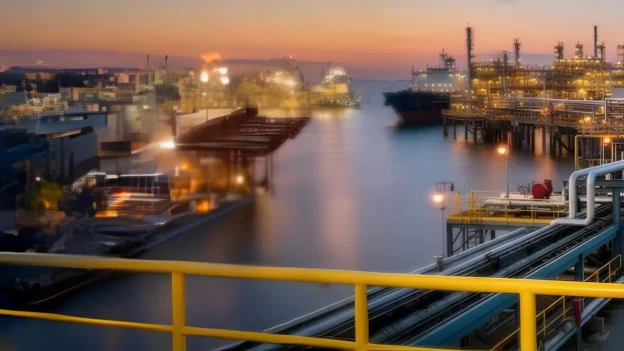This article presents an overview of offshore maritime terminal management, highlighting the critical role of human expertise in the safe and efficient operation of these facilities. It addresses the specific challenges and operational significance of offshore CALM (Catenary Anchor Leg Mooring) terminals, as well as the interplay between technical systems and human decision- making in maritime operations.
Additionally, the offshore CALM Buoy terminal project will be analyzed from the perspective of an EPCI (Engineering, Procurement, Construction & Installation) project, covering all phases from execution to operation and maintenance, taking into account human factor at every stage.
- Engineering creates the basis of the system:
- The necessity of skilled engineers for conceptual design, hydrodynamic analysis, and mooring system assessment.
- Integration of operational feasibility by the participation of experienced maritime professionals.
- Procurement is an important factor for the selection of correct material:
- Supplier selection and material quality assurance through expert evaluation.
- Supplier regular audits and qualification check for all critical items.
- Human decision-making in cost-efficiency and risk mitigation.
- Construction is the key point for human involvement:
- Yard audit and selection to get high quality standards in place.
- The importance of skilled shipyard workers for fitting, welding and assembly in accordance with controlled procedures.
- Witness surveys (yard QC engineer, class surveyor & third- party inspector) during construction.
- Installation is the most critical process before commissioning:
- The importance of skilled offshore workers for assembly, mooring deployment, and subsea connections.
- Coordination between engineers, project managers, and installation teams.
- Commissioning and Handover is the most critical process for the Client:
- Human factors in commissioning, testing and validation are of key importance for final quality assurance..
- Training personnel for initial operations and monitoring safety protocols.
- Human element plays an important role in Operations of SPM Terminals
- The necessity ofhighly skilled operational team members to carry out loading or offloading operations on the terminal according to specific procedures.
- Maintenance of SPM terminals is the phase where we see the biggest effect of human contribution:
- Routine Inspections and Monitoring: The role of trained technicians overseeing in mooring integrity, Buoy performance, and subsea connections.
- Emergency Response and Repairs: Human expertise in handling incidents such as mooring failures, hull damage, and extreme weather conditions.
- Predictive Maintenance Strategies: Use of data analytics, but dependent on human interpretation and execution.
- Training & Competency Development: Ongoing skill enhancement for operational teams to ensure safety and efficiency.
Case studies
Below we summarize 3 case studies where we see the importance of human involvement in CALM Buoy Operations:
Case Study 1: Bearing failure due to inadequate material selection
A CALM buoy system deployed in West Africa suffered premature bearing failure within five years due to insufficient corrosion-resistant coatings. Engineers originally selected standard stainless stainless- steel bearings without accounting for the high salinity and microbial- induced corrosion present in the area. The failure led to operational downtime and costly emergency repairs, highlighting the importance of human foresight in concept/design & material selection.
Case Study 2: Premature failure of CALM buoy coating system
An offshore CALM buoy was designed with a standard marine-grade epoxy coating to protect against corrosion. The buoy was exposed to tropical conditions with high humidity, strong UV radiation, and frequent saltwater spray. Within two years of operation, severe paint degradation and corrosion spots appeared on the Buoy’s exposed surface, particularly near weld seams and high-impact areas. Blistering, peeling, and rust accumulation led to a loss of protective function, reducing buoy longevity and increasing maintenance requirements. Offshore inspections of the paint system revealed that root failure was due to initial steel surface not properly blasted to remove mill scale and oxidation before paint application, leading to poor adhesion and early peeling, stressing the critical role of human control in coating system selection, surface preparation & application.
Case Study 3: Swivel bearing breakdown due to poor installation practices & lack of maintenance
Improper installation of swivel bearings led to rapid deterioration within three years. The root cause was traced to incorrect torque settings applied during yard assembly and improper regular greasing program causing uneven load distribution and accelerated wear. The failure resulted in restricted crude offloading operations, demonstrating how human precision in installation and close follow- up of maintenance procedures are critical.
Conclusions
- Strengthening human expertise is the central axis in CALM Buoy terminal management.
- The evolving function of technology in maritime terminals should always stay under human oversight.
- Future perspectives are emerging on improving training, safety measures, and operational efficiency through integrated human and technological systems.
This article was developed by specialist Alain Tomasoni and published as part of the sixth edition of Inspenet Brief September 2025, dedicated to technical content from the energy and industrial sectors.

